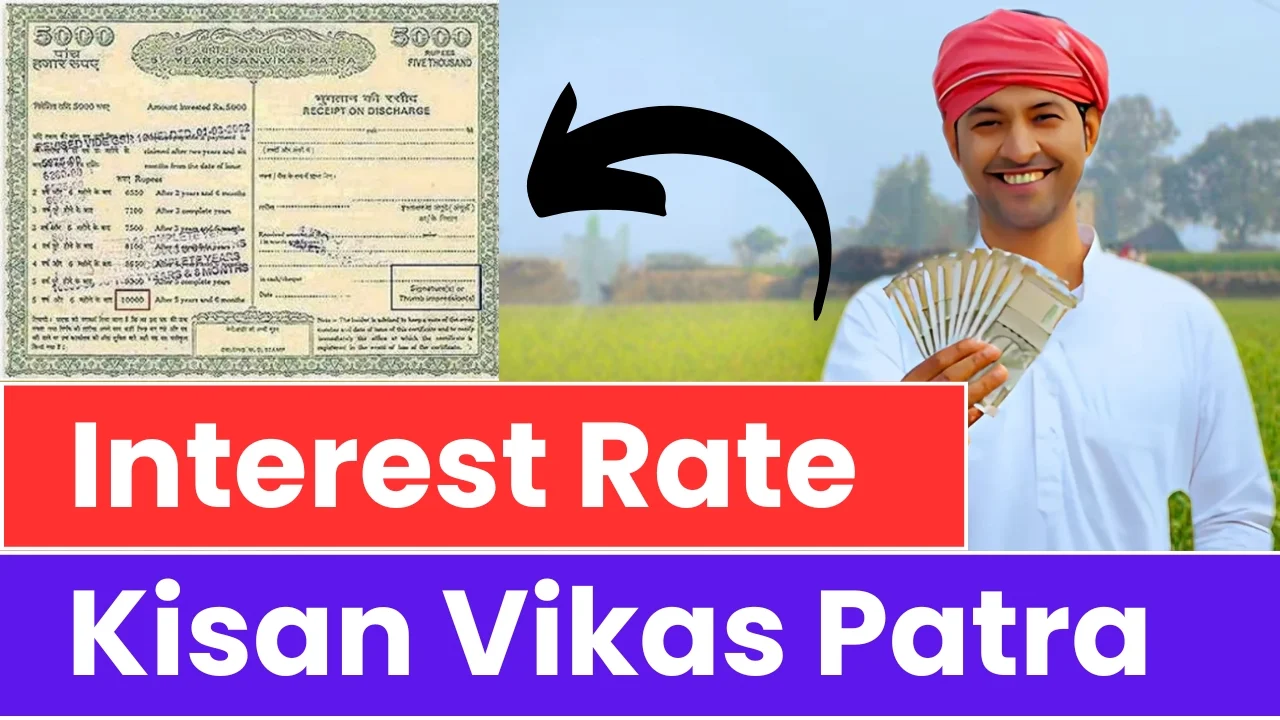Looking for a low-risk way to double your money without worrying about market volatility? The Kisan Vikas Patra (KVP) might be exactly what you need. Backed by the Government of India, KVP is a long-term small savings scheme that promises to double your investment over a fixed tenure—making it ideal for conservative investors looking for stability and guaranteed returns.
In this blog, we explore how Kisan Vikas Patra works in 2025, its interest rates, benefits, eligibility, tax rules, and whether it should be part of your financial portfolio.
What Is Kisan Vikas Patra?
Kisan Vikas Patra (KVP) is a one-time investment scheme offering guaranteed returns. Originally introduced in 1988 and re-launched in 2014, its core objective is to encourage long-term savings among rural and semi-urban investors who may not have access to formal financial systems. It also helps protect low-income individuals from falling into fraudulent investment traps.
Unlike other small savings schemes, KVP does not offer income tax benefits under Section 80C, and the interest earned is fully taxable. However, its guaranteed doubling of investment makes it a preferred choice for many.
Also Read: EPFO PF Claim Rule Change: New Rules Announced for 2025 – What Every Employee Must Know
KVP Interest Rate and Maturity in 2025
As of 2025, Kisan Vikas Patra offers an annual interest rate of 7.5% (compounded annually). At this rate, the invested amount doubles in 115 months (9 years and 7 months).
Example:
If you invest ₹1,000 in KVP today, you’ll receive ₹2,000 after 115 months—regardless of market fluctuations.
Key Features of Kisan Vikas Patra
| Feature | Details |
|---|---|
| Minimum Investment | ₹1,000 (in multiples of ₹100) |
| Maximum Investment | No upper limit |
| Interest Rate (2025) | 7.5% (compounded annually) |
| Maturity Period | 115 months (9 years and 7 months) |
| Premature Withdrawal | After 30 months (2.5 years) under conditions |
| Tax Benefit | No Section 80C benefit, interest is taxable |
| Availability | Post Offices and selected public sector banks |
| Safety | Government-backed and risk-free |
Who Can Invest in Kisan Vikas Patra?
KVP is open to:
- Any Indian citizen aged 18 or above
- Parents or guardians on behalf of minors
- Trusts (but not HUFs or NRIs)
- Joint holders (Joint A or Joint B options)
Note: Individuals must comply with KYC norms, and PAN is mandatory for investments over ₹50,000. For investments above ₹10 lakh, income proof is required.
How to Buy Kisan Vikas Patra
You can invest in Kisan Vikas Patra through:
- Any post office or designated public sector bank
- Online applications (where available)
- Payment modes: Cash, cheque, demand draft, or money order
Documents required:
- Aadhaar
- PAN card (mandatory above ₹50,000)
- Proof of address
- Passport-size photograph
- Income proof (above ₹10 lakh investment)
Loan and Nomination Facilities
- KVP certificates can be pledged as collateral to secure loans from banks.
- Investors can nominate a beneficiary at the time of investment or later.
- Certificates can be transferred between individuals or post office branches under certain conditions.
Also Read: New Pension Rules 2025: Big Shocks & Big Benefits! What Every Retiree Must Know
Premature Withdrawal Rules
KVP has a lock-in period of 30 months, after which premature encashment is allowed only under specific conditions:
- Death of the holder
- On court order
- Forfeiture by a government officer (pledge-related)
Tax Implications of KVP
- No tax deduction is allowed for the invested amount.
- Interest earned is taxable as per the investor’s income tax slab.
- However, no TDS is deducted at the time of maturity or withdrawal.
Pros and Cons of Kisan Vikas Patra
Pros:
- Doubles your investment with guaranteed returns
- Safe and government-backed
- Easy to access via post offices and banks
- Offers loan and nomination facilities
- No upper investment limit
Cons:
- No tax benefits
- Long maturity period
- Interest is taxable
- Better options like PPF or ELSS exist for tax-conscious or high-return investors
Also Read: PM Awaas Yojana 2025: Government Offering ₹1.3 Lakh to Build Your Own House – Check Eligibility, Documents, and Payment Status Now
Final Verdict: Is Kisan Vikas Patra Worth It in 2025?
Kisan Vikas Patra is an excellent choice for investors seeking safety, predictability, and simplicity. If your goal is to double your money without worrying about market risks, KVP fits the bill. However, if you’re looking for tax savings or higher returns, schemes like PPF, NSC, or ELSS may serve you better.
For rural investors and those unfamiliar with equity markets, KVP remains one of the most secure long-term options available today.
